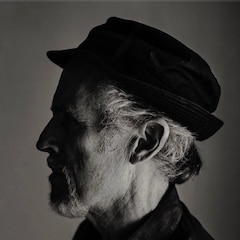Tokyo's Yokocho: Great Alleyways Old and New
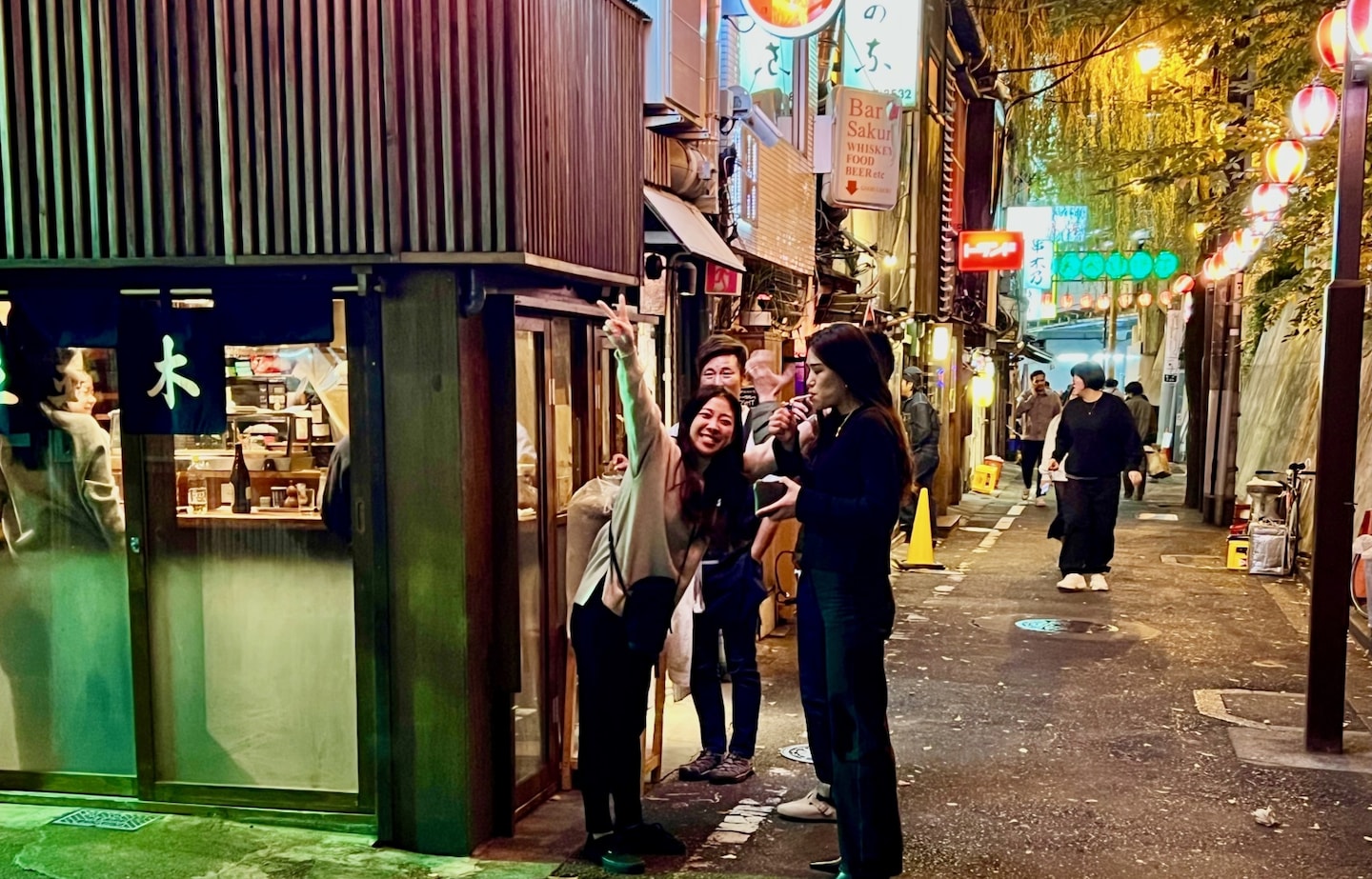
One of the small alleyway shops of Nonbei Yokocho in Shibuya. (All photos by ROBBIE SWINNERTON)
Tokyo's yokocho, local backstreets and alleyways lined with bars and casual eateries, are a beloved part of this vibrant city. Food critic ROBBIE SWINNERTON introduces a half dozen of his favorites.
Tokyo has always been a city on the move, and these days the changes are arriving faster than ever. But even among all the towering new developments, you may sometimes glimpse a vestige of the past: a low-rise block of bars housed in ramshackle structures that have long since seen better days.
Congratulations, you have stumbled upon a yokocho. These narrow enclaves of pedestrian alleys lined cheek by jowl with drinking dens, cheap taverns and hole-in-the-wall eateries are one of the city’s classic old-time pleasures.
Most of Tokyo’s original yokocho date back to the days when the city was rebuilding in the post-World War Two era. Huddled together, as if for safety in numbers, they tend to stay open late, catering not just to carousers but those in search of cheap skewers of grilled chicken, a quick bowl of noodles or a final drink or two before the last train.
Ranging from cheap and cheerful to (occasionally) dark and dingy, the individual premises will likely offer little more than a counter overlooking the proprietor’s compact open workspace. Just pull (or slide) open the door, establish that there’s enough room for you to sit or stand, and then squeeze yourself in.
"These glorified food courts offer a dose of casual, unpretentious enjoyment."
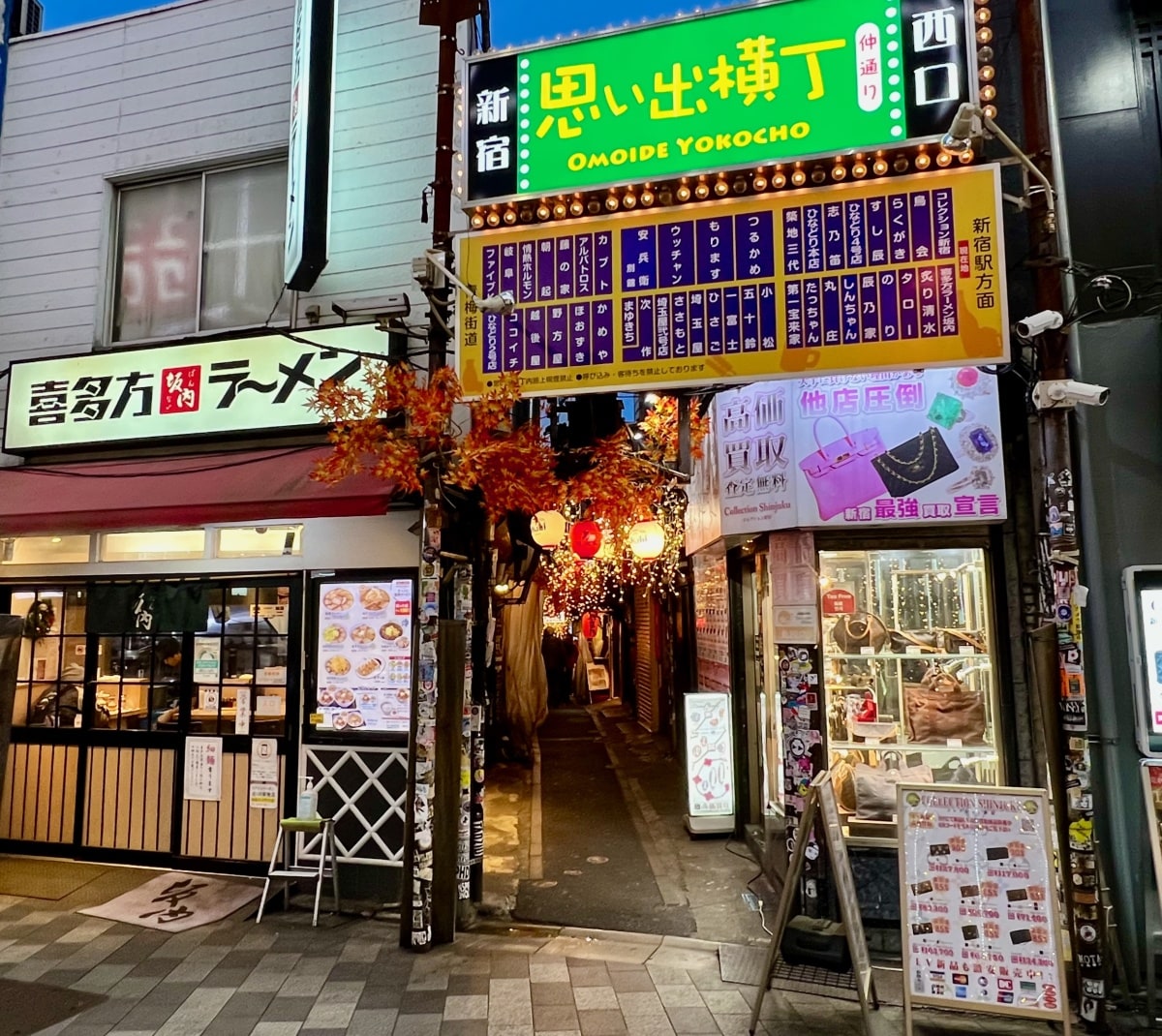
The entrance to Omoide Yokocho, Shinjuku.
It may not be the food and drink that draw you in: quality is rarely better than passable, though notable exceptions to that rule do exist. What you’re there for is to imbibe the nourishment of company and conversation. And then to move on, perhaps to head homeward—or, more likely, to crawl your way past a few other places down the block.
Over the decades, the yokocho experience came to be looked down upon as insalubrious, outdated, uncool. But what goes around in Tokyo inevitably comes around: these days the idea is back in fashion. Fueled by a good dose of nostalgia and the craving for down-home social interaction (especially since the pandemic), the concept is actually being factored into designs for new buildings.
Rather than recreating stand-alone alleys—obviously that would take up too much valuable real estate—they are being shoehorned into basements or spread across the upper floors of office buildings. Dubbed "neo-yokocho," these glorified food courts offer a dose of casual, unpretentious enjoyment that is especially welcome in upmarket parts of town.
"Here are half a dozen of my favorites, a mix of both old-school and new."
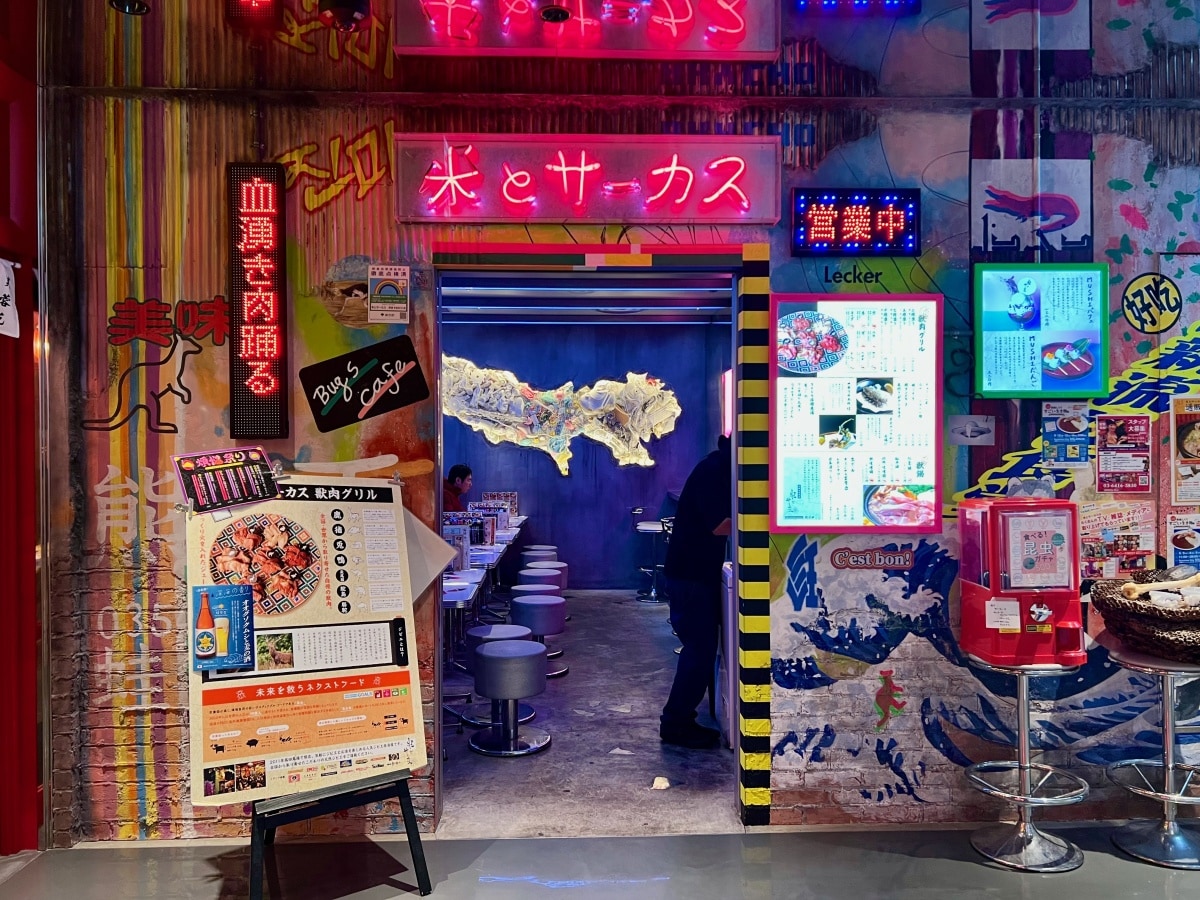
One of the shops of Chaos Kitchen, in Shibuya Parco.
Much as I adore the rough-hewn ambiance, the fading patina and chance encounters in those original yokocho—indeed, they played a formative part in my education in Tokyo living—there’s plenty to be said for the contemporary versions, too. Not least because you can wander from one bar to the next without needing a coat or umbrella.
Here are half a dozen of my favorites, a mix of both old-school and new. Don’t expect every bar to be welcoming; some may be for regulars only. Just try your luck and be ready to speak however many words of Japanese you can muster. And at the older yokocho remember to carry cash: after all you’ll be stepping back to a time before credit cards and e-money even existed.
Nonbei (Drunkards’) Yokocho (Shibuya)
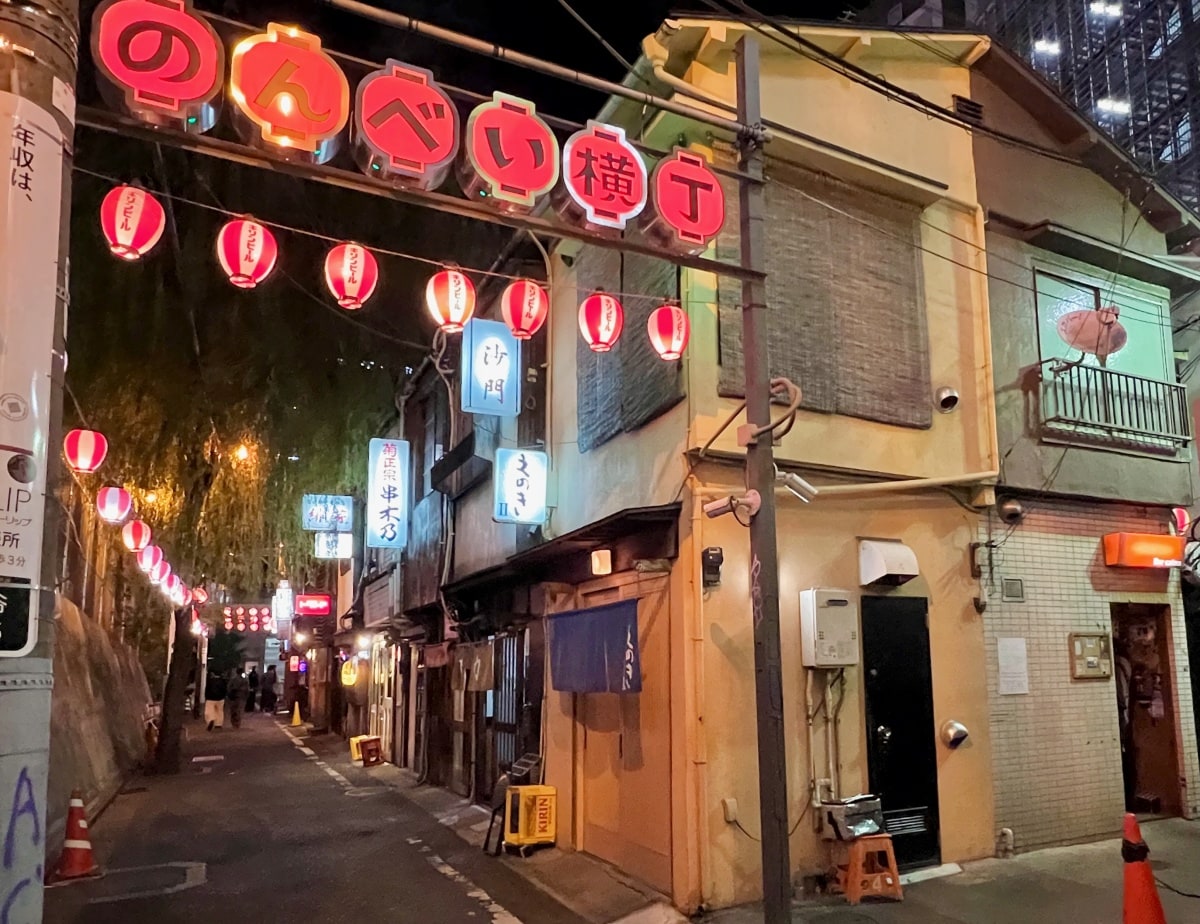
To wander into this cramped, two-alley enclave for the first time is to be time-warped back half a century. Mere steps away from the razzle-dazzle of Shibuya’s world-famous scramble crossing and squeezed in beside the busy JR railway lines, it seems barely conceivable that these battered, old-school structures have not just survived but thrived.
Many of the longer-serving counters on the inner alley serve food and tend to be so popular these days it’s hardly worth sticking your head in to ask. But the more casual stand-up bars close by the train tracks usually have some wiggle room to squeeze you in. And for a proper full-immersion, sit-down experience with sake and nibbles, try your luck at Enoki II by entrance closest to the station.
http://www.nonbei.tokyo/
Omoide Yokocho (Shinjuku)
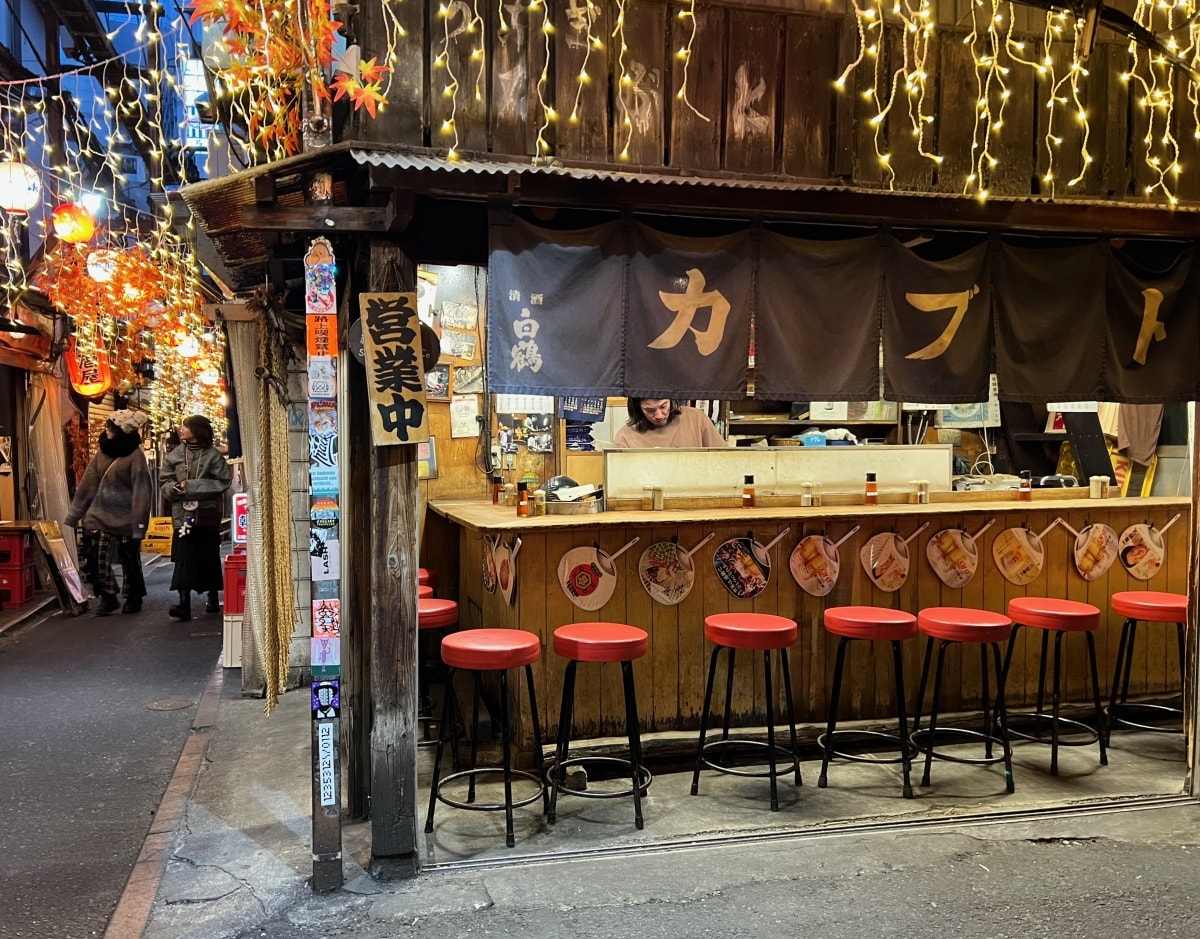
The official name over the entrances to this ramshackle block on the northeast corner of Shinjuku Station translates something anodyne, akin to "Memory Lane." But until recently it was widely referred to as Shonben Yokocho ("Piss Alley"), such was its odoriferous reputation. You’ll still spot a few insalubrious corners, but most of the 50 or so hole-in-the-wall counters are well scrubbed now, with signs in English to lure in the curious Western and Asian tourists who wander through.
The Blade Runner vibes are strong, especially if you happen to arrive on a rainy night. Head inside and order a beer at Kabuto, right by the midpoint of the alley. It’s stood there since 1948 and, from the accretion of grease and patina, it looks it. The welcome may be brusque but you’re likely to be admitted once you understand the house rules: no kids; payment upfront in cash; and you have to order food as well—charcoal-grilled eel, skewered and basted in a murky vat of soy sauce that may well have been there from the very beginning.
http://shinjuku-omoide.com/
Golden Gai (Shinjuku)
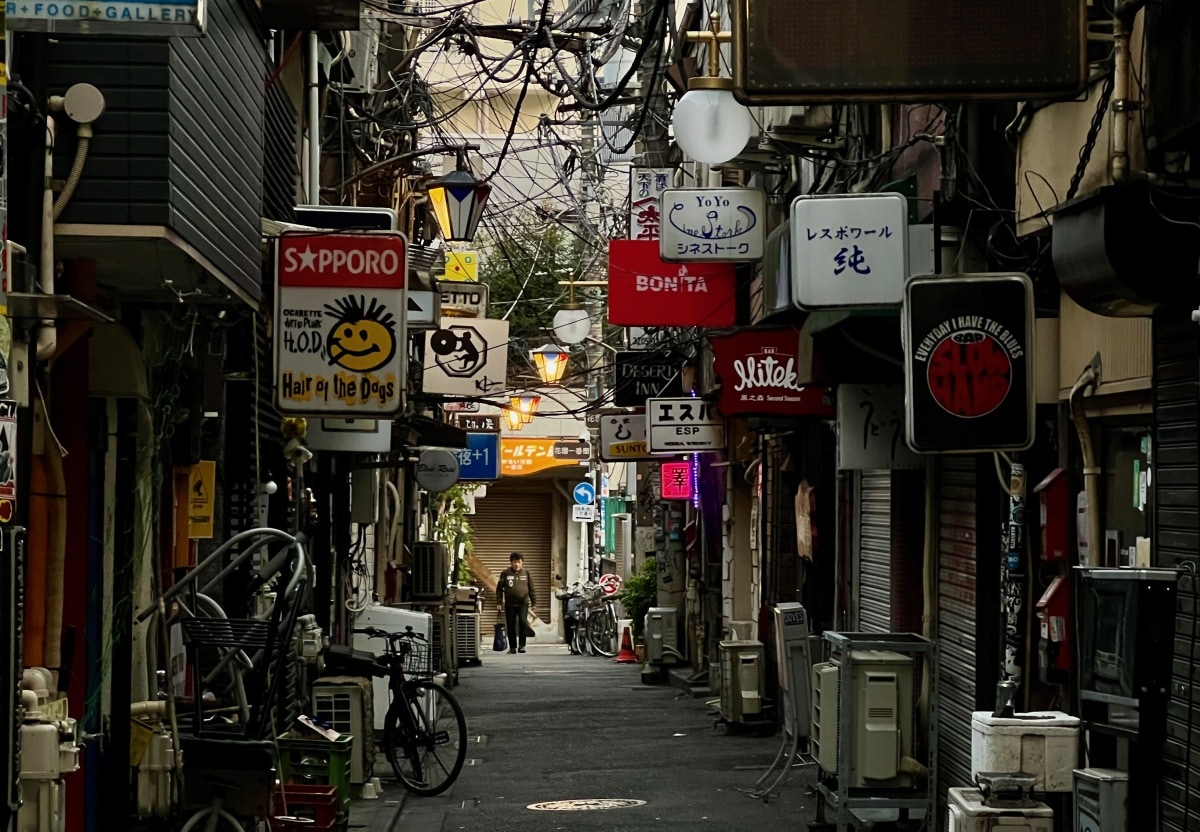
Just spitting distance from Shinjuku’s department stores and the risqué entertainments of the Kabukicho district, Golden Gai offers a flashback to the last century when it was a Tokyo subculture nexus. With more than 280 tiny bars and eateries crammed into a warren of low-rise alleys, it was known as a gay meeting spot (well before the nearby and now legendary Nichome district) as well as a haunt for artists, writers, film directors and radicals at either end of the political spectrum.
Although it still retains a certain edginess, Golden Gai’s reputation has spread well beyond Japan and these days plenty of bars are tolerant of outsiders, even jet-lagged Westerners in search of kicks. You’ll find bars catering to just about every taste and persuasion. Just remember the cardinal rules: no smoking in the alleys (it’s a fire hazard); no rowdiness; and no videos or photos of people without express permission. And if you get hungry on your bar crawl, just head to Ramen Nagi, an ever-popular all-night noodle joint where a 3 AM bowl has become Tokyo right of passage.
http://goldengai.jp/
Ebisu Yokocho (Ebisu)
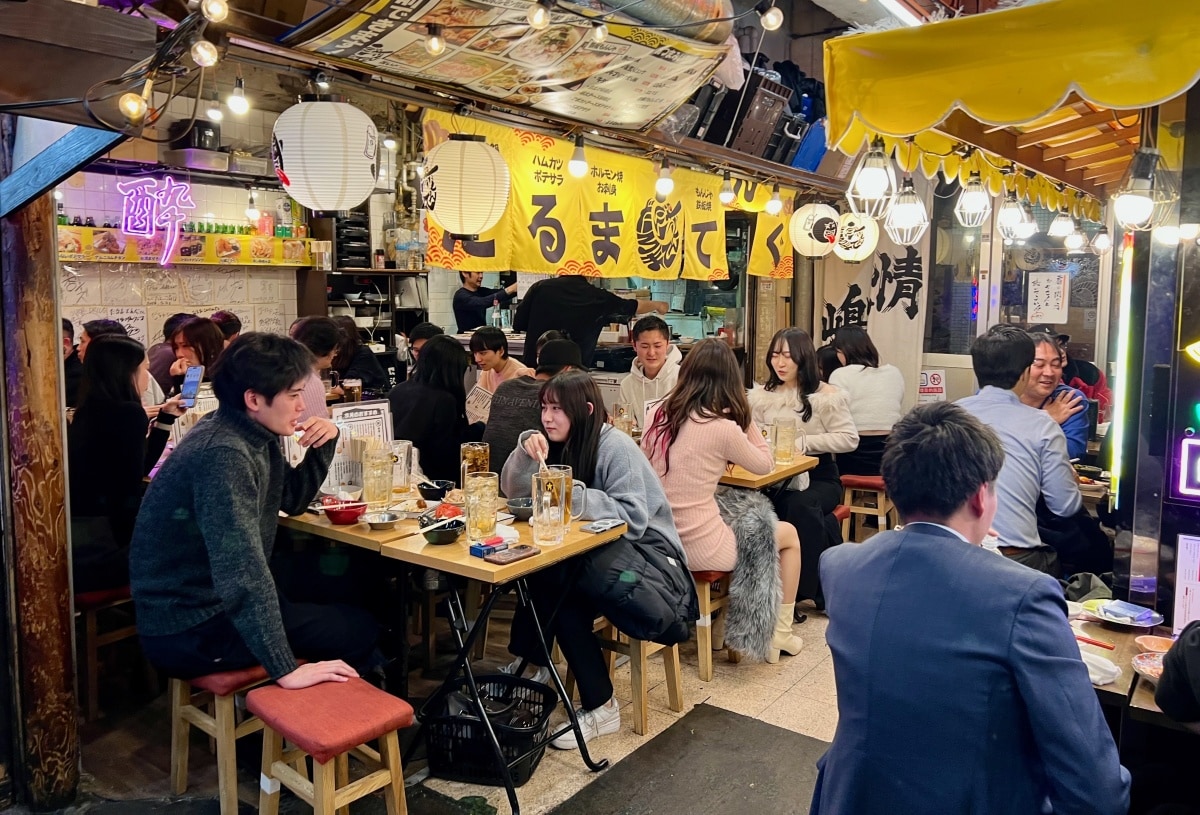
It’s been 15 years since the drab, ground-floor shopping arcade of a seen-better-days 1970s apartment block near Ebisu Station was given a facelift and converted into a buzzy, retro-themed, evening-only food alley. Rebranded under the name Ebisu Yokocho, it was an instant hit. And so it remains today.
What makes it work so well is the variety of individual eateries. From yakiniku and hamayaki (grilled seafood) to oden, kushiage and okonomiyaki, each of the 19 shops has its own specific genre and look. What they have in common is that they’re affordable, no-frills and accessible — and all under the same boisterous roof.
A major indicator of Ebisu Yokocho’s zeitgeist credentials arrived in 2015, when contemporary artist Takashi Murakami took over the entire premises for an epic all-night afterparty to mark the opening of his landmark exhibition at Roppongi’s Mori Art Museum. Ebisu Yokocho’s success has done more than merely bolster one down-at-heel corner of Tokyo: it has set the template for other similar projects around the city.
http://ebisu-yokocho.com/top.html
Chaos Kitchen (Shibuya Parco)
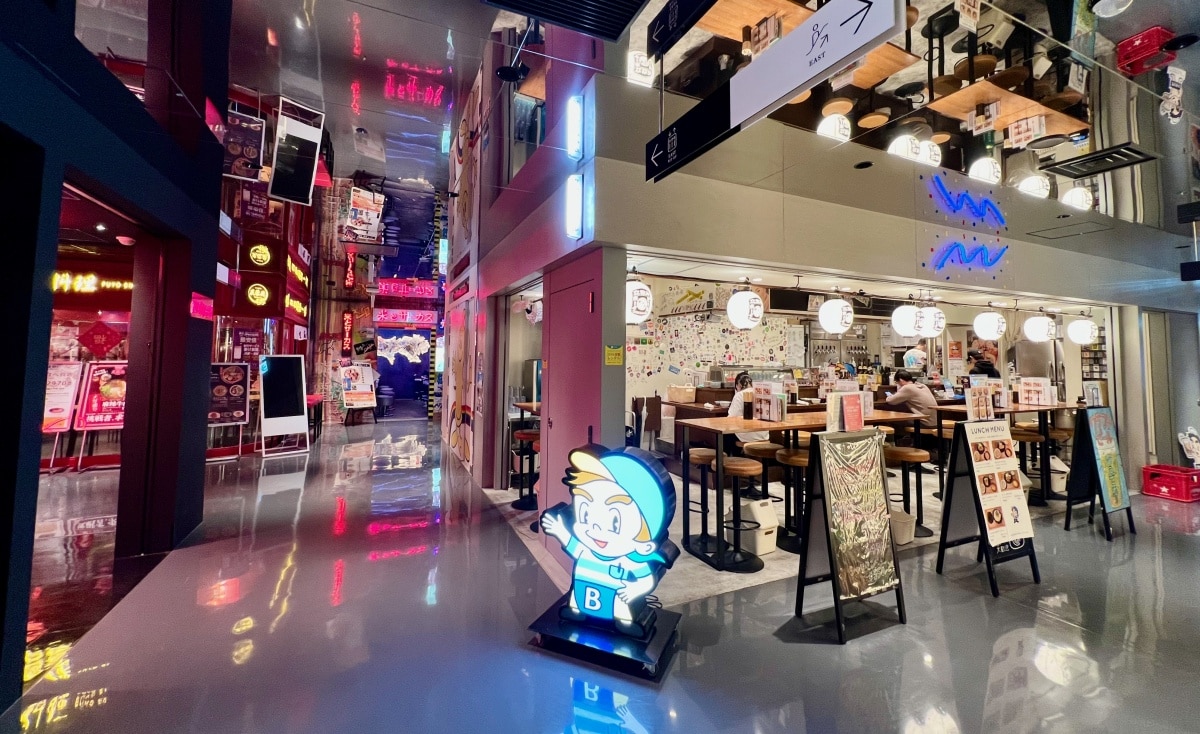
The rebirth of Parco’s landmark luxury mall in Shibuya in late 2019 was greeted with considerable fanfare—and much of the applause was for what lay below ground level. Instead of the standard array of individual eateries, the entire basement floor consists of a single interconnected unit—a bright, glittering contemporary take on the yokocho ethos.
Not that Parco would call it anything so prosaic. For them it’s Chaos Kitchen, a name intended to capture its haphazard layout and interior decor, all neon and reflective surfaces. But the idea behind it is the same: a motley mix stand-up beer and sake bars alongside more substantial dining venues. There’s an ever-popular beef grill, a number of noodle, burger and conveyor belt sushi joints, and even a darkened chamber along one wall where the menu veers to all manner of bugs and wildlife. Just as you might expect at the Tokyo’s very first "neo-yokocho."
https://shibuya.parco.jp/page/foods/chaos_kitchen/
Toranomon Yokocho (Toranomon Business Tower)
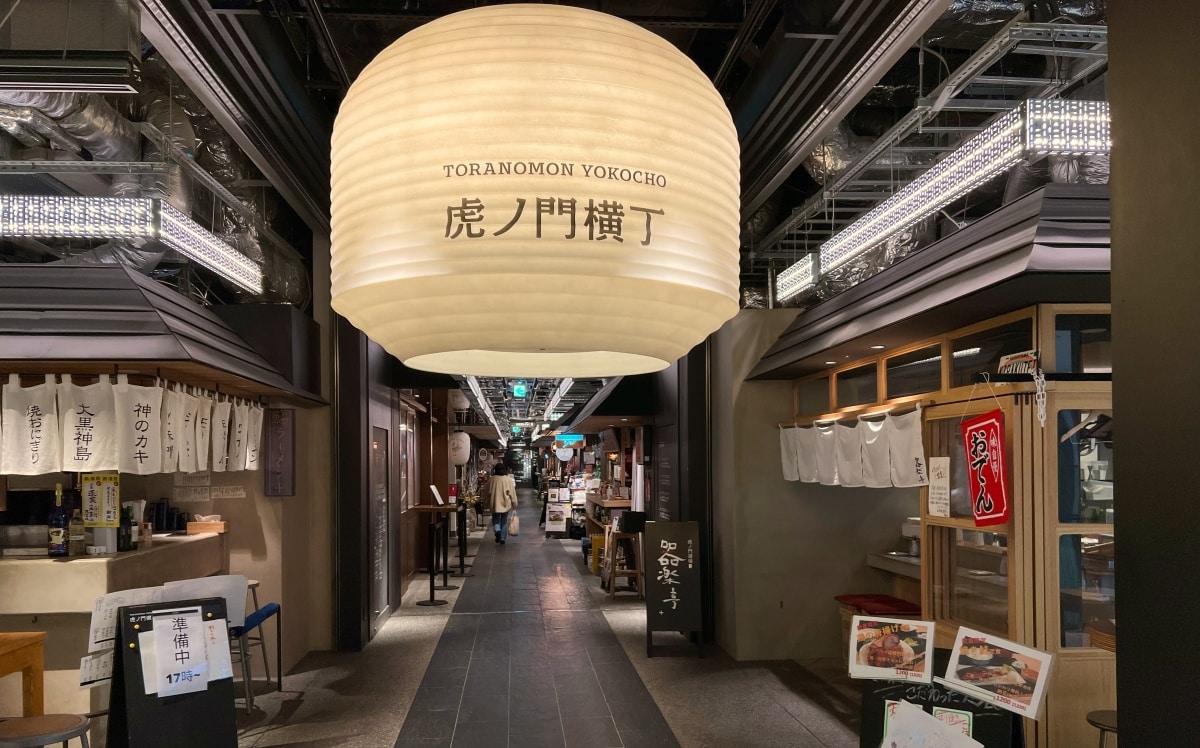
Not so many years ago, just the mention of a gourmet yokocho would have provoked laughter as a contradiction in terms. Toranomon Yokocho demonstrates the idea is not just possible, it can be highly successful.
The more than 20 eateries and bars brought together on the third floor of the swish Toranomon Hills Business Tower are operated by some of Tokyo’s most respected restaurants. Once you’ve passed under the giant white lantern at the entrance, you’ll find excellent cuisine on offer, including a branch of Spanish restaurant Zurriola (two Michelin stars) serving tapas and plancha-fried dishes; yakitori at Bird Land (also Ginza, one star); French seafood bistro fare by Ata (Ebisu); and Ryukyu-Chinese cuisine from the legendary Tama (Shibuya). And of course there’s no shortage of bars to go with that.
https://www.toranomonhills.com/toranomonyokocho/
Also recommended!
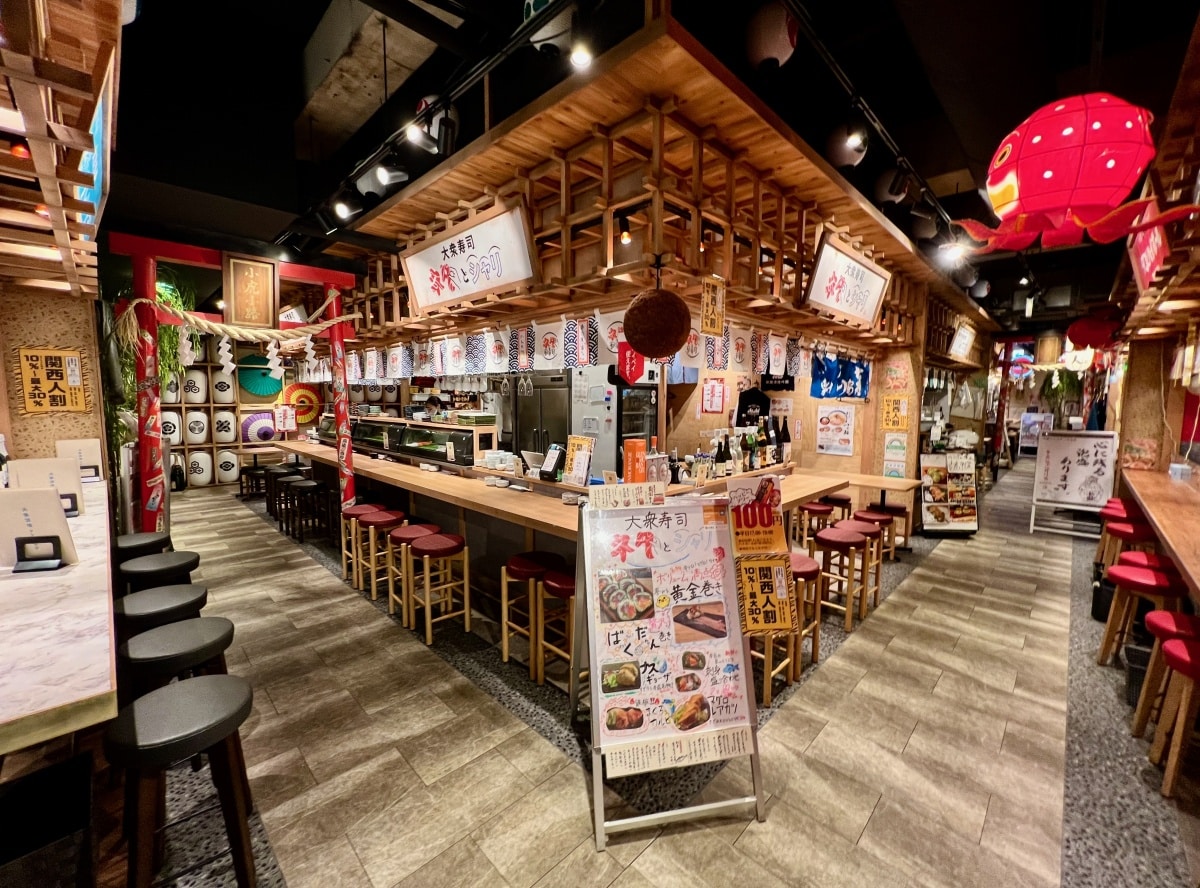
Kotora Komichi yokocho in a Toranomon building basement
Kotora Komichi (Toronomon)
https://kotora.info/
This cheerful modern yokocho, which opened in early 2021, was created from scratch in a basement just down the road from the upmarket Toranomon Yokocho. The contrast couldn’t be greater: the dozen eateries here stick to the traditional yokocho values. The food is mostly traditional and so is the colorful interior decor.
Azuma-koji (Oimachi)
https://ooimachi.jp/shop/shoplist/malls/higashi/
Oimachi, just south of Shinagawa, is one area still embraces its postwar history. Stepping away from the JR station and into Azuma-koji, you find little has changed since Showa Era (pre-1990) Japan. Stretching some 100 meters end to end, this classic backstreet is crammed with low-cost, high-value eateries of all descriptions.
Nomiya ("Drinking hole") Yokocho (Kitasenju)
Everything gets a lot more down to earth on Tokyo’s northeastern fringe, and nowhere more so than along this lively street outside Kitasenju Station. Lined with cheap eateries, izakaya taverns and old-school sake bars, this is next-level yokocho territory. Be warned: English menus are few and far between out here.
Harmonica Yokocho (Kichijoji)
https://musashino-kanko.com/area/kichijouji/harmonica_street/
Like the entire Kichijoji neighborhood, the area that make up Harmonica Yokocho has undergone a transformation—especially since its black market days. In contrast with most of Tokyo’s nightlife enclaves, this yokocho also has a lively daytime presence. But wander back once darkness has fallen and you’ll find the maze of alleys buzzing with small bars and eateries, many of which stay open till deep into the night.


